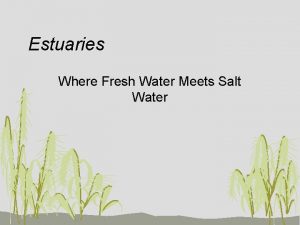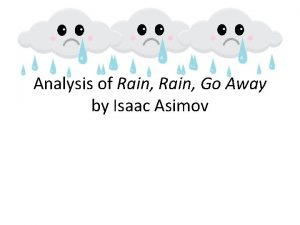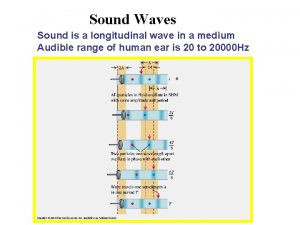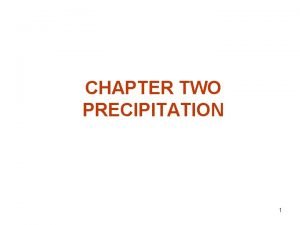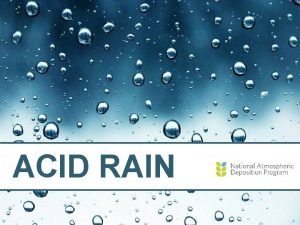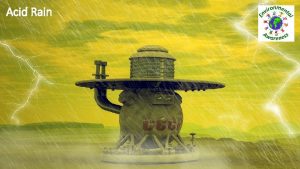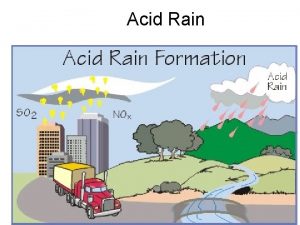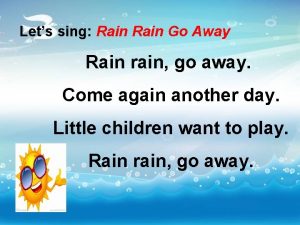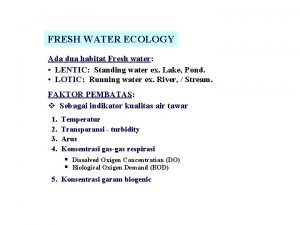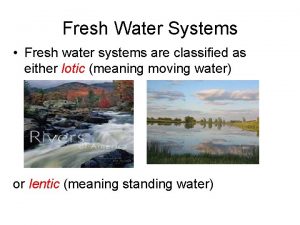Fresh water sources v Rain water water has









- Slides: 9

Fresh water sources v Rain water (water has been evaporated into earth's atmosphere ) • Drinking water • Water for crops v Ground water • Largest source • Drinking water after desalinated and refined v Icy water • Melting of polar ice caps • Reduction of ice shelves over the arctic • Second largest source

The Earth’s Different Forms Of Fresh Water Rain water: Evaporated water becomes fresh (from fresh or salty sources) • Most accessible • Used for drinking and agriculture • Ground water: • Natural reservoirs found below Earth’s surface • Largest fresh water source • Second Largest water source • Much of it can’t be consumed directly; it must be purified Icecaps: • Least accessible • Second largest fresh water source • Earth’s climate change causes ice in the Arctic to melt in significant amounts • Less than two percent of earth’s water

Rainwater: • Important source. • Drinking water. • Water to feed crops. Ground water: • Largest source fresh water on planet. • Second largest source of water found in the ocean(salty water). Ice water: • • Melting point. Difficult to drink but possible.

Sources of fresh water Rain water - Become a fresh water - Supply to drinking water - Water to feed the crops Ground water - Very large source of fresh water Ice caps - Second largest fresh water - Difficult to use but possible

Sources of fresh water v. Rainwater: • Water evaporated into the earth’s atmosphere. • Used as drinking water and to feed crops. v. Groundwater: • Underneath the surface of earth. • Largest source. • Only a percentage can be refined. • Used as drinking water. v. Ice: • Second largest source. • Difficult for consumption.

Sources of fresh water - rainwater Product of water evaporation - groundwater - Largest source of fresh water. - Second source of water general. - Ice shelves - Second largest source of fresh water. - Less than 2% of earth’s water. Uses: - drinking water. - Feeds crops. Uses: - drinking water. - Reduces because the earth’s climate change.

Water sources Rainwater Groundwater Water cycle : Produce fresh water Largest source for fresh water Suitable for drinking 2 nd. largest sources of water Feed crops Desalinated + refined Ice 2 nd. Largest fresh water sources Difficult to drink but possible Sea water Salty, not able to consume it by people

Water Sources Rain water Ground water Ice -Important source of fresh water -Earth evaporating production - Many countries, use it for drinking and feed crops -Largest source of fresh water -Second largest source of water -it’s underneath the Earth surface -Desalinated to use for drinking -Second largest source of fresh water (less than 2% of water source) -Reduction as a result of melting because of Earth climate changes

Sources of Fresh Water • Rainwater how does it happen? usage • Groundwater (underneath the earth’s surface ) 1 st source of fresh water - fresh ( used after desalination and refining ) - salty ( not consumed ) • Ice ( due to climate change ) 2 nd source of fresh water <2% of the earth’s water


